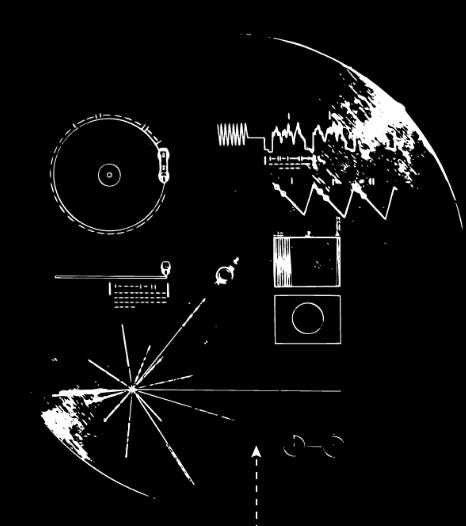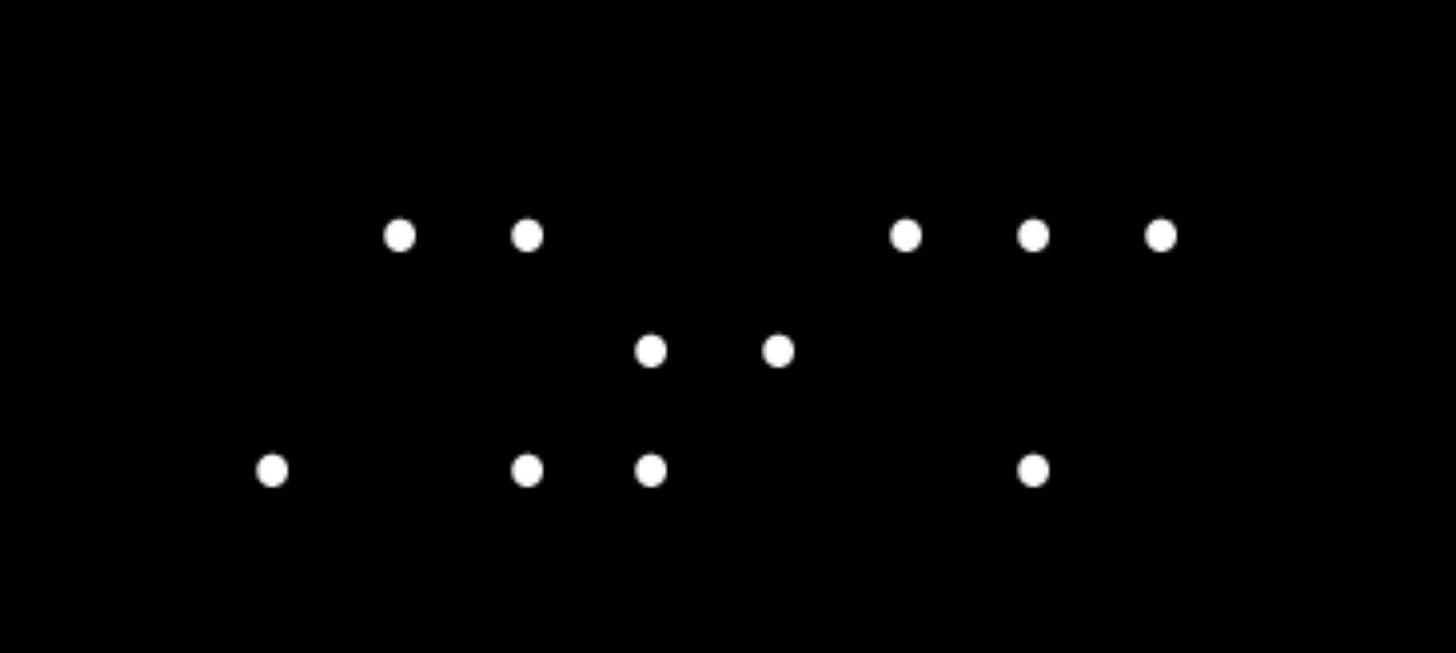This piece depicts the sun and planets of our solar system using random-strokes calligrams in different colours & sizes. The simplest of the visualisations I have put together has proved the most popular (relatively speaking). I have always wondered what exactly might be responsible for the outlying appeal, so I could perhaps try to recreate with the essence. There just is something about it that speaks to people I suppose. The first print I ever sold was this one (for $100 to an endlessly supportive Ishana, while she was visiting me in Berlin).
The original calligram that forms the basis of this visualisation was drawn on paper in New Haven back in 2022, when I had just graduated from Yale and decided to go back to practicing the childhood hobbies that had helped me get there. I digitised it for colouring and manipulation.
Now that I have turned it into a motif that recurs across my visualizations, I find myself grateful for the attention paid to every serif. If I had fully known, maybe I would have paid even more. Artefacts were introduced and removed along the way — photographing and vectorising hand-drawn elements comes with a lot of opportunities to set parameters for thresholding, smoothening, and so on.
The calligram is obviously inspired by the sun it evolves to represent, but the resemblance to how the sun is depicted on the Japanese flag isn’t a coincidence. A college friend from Tokyo had given me a beautiful postcard playing with red, white, and the softest gold during the COVID years that inspired this depiction. I was too touched back then to take a picture, but I’ll add one when I’m reunited with all my papers next. I stopped carrying them with me recently, when I realized I have less faith in the permanence of my temporary residences than those of my parents.
Radii, elemental state, number of moons, and rotation speed are encoded visually. The eight planets are arranged on an elliptical path in order of increasing distance from the sun from bottom-right to top-left. While I am partial to Pluto, I left it out. Data regarding the solar system were taken from IAU (International Astronomical Union) & NASA (National Aeronautics and Space Administration). It’s important to note that the scaling only worked if I let the area of the calligram correspond to the radius of the body it depicted. If area varied proportional to area, everything would vanish in relation to the sun. I had to edit the number of Saturn’s moons from 146 to 274 recently, to reflect astronomy’s updated catalogue. I read that they have to dig around for obscure deities to find names for all these new moons to keep with convention. Io remains my favourite one.
The colours I use for the gradient fills were sampled from images of the planets. The Arabic calligraphy that forms the crescent used for the moon marker in this piece is a verse from the Quran. It’s taken from the only memento I bought during my first visit to Istanbul to see a friend in the spring of 2019.
This piece was completed in June 2024. I used calligrams partially as a nod to one of my previous creative outlets (calligraphy, chiefly Gothic Fraktur), and partially to try to explicate a link between the strokes of our thoughts and the dance of our celestial neighbours. There is a reason the piece on the solar system follows the previous piece on music — the music of the spheres, musica universalis. Astronomy is to sight what music is to sound, in the fashion of the ancients. As the [spurious, but still poignant] quote popularly attributed to Pythagoras goes, “There is geometry in the humming of the strings, there is music in the spacing of the spheres.”
I find that the calligram especially shines in capturing the plasma state of the sun. The degree of swirl effect encoding (logarithmically) the rotation speed is meant to add a somewhat hypnotic effect and suggest hints of movement in a still medium.
The black negative space I use throughout the series is especially well suited for the vast emptiness of space. I have made alternative versions of this piece that include a backdrop of stars and vanishing lines connecting them in a loose Voronoi tessellation. One of these can be found with some amateur animations on my personal website.
A sketch of the Voyager Golden record from 1977 is included in the top left margin, reflecting its position in interstellar space well beyond the margins of our domain. It’s a hauntingly beautiful summation of humanity, this grand effort to fling up a probe to pierce through the mantle of our cosmic loneliness. I am not sure if my visual work communicates it, but there is a significant fragment of that shared loneliness living deep inside nothing ever placates. It strikes me sometimes on the sunniest of days amidst the nicest of crowds, when I realise just how cold it is I always feel. I choose to deal with it in the language of transcendence, by trying to create things that might narrow the borders in between, but I’m not always sure it’s the right choice.
Once you take flight to live in the world of ideas you can find plenty of great company up above, but must eventually face that we are doomed to soar within our own abstract walled off dimensions of intangibility never to truly touch. I tried devoting life to studying connection itself, from the wiring of the cortex to diverse fields of thought, but I suspect some quests for solace are best left to deciphering the patterns of the stars. At least momentarily we fly, à la poursuite d'un oiseau bleu.
I included my maternal grandfather’s name (Azim) in Braille at the top of this piece. As a child, I had promised to write his name in the stars. I imagine he would be amused by the form they take, so even the blind can see. It’s one of the great sorrows of this life that although all my dreams came true, they waited till the one who inspired me to dream in the first place was no longer around to share in their fruition. Nana would have understood the eventual vision, with all its beautiful twists and scattered pieces, in a way perhaps no one ever can — because it first began to bloom in his own blood. Proxy fulfilment of an ancestral destiny.
Finally, a reference to my favourite constellation (composed of Orion’s belt and two adjacent stars — Rigel & Betelgeuse — that complete a ‘diamond’) is included in the piece.
I’ll save my relationship to this enigmatic set of five stars for a future piece of writing, since this really must be dragging on, but I hope the little tricks of perception I attempted with cyan, magenta, and yellow, succeed in making them stand out somewhat.
All this to say merely that there is a surprising amount of sentiment, somewhat warm & somewhat sad, hidden behind this seemingly sterile piece. Maybe the weight of all that unrequited love and unfulfilled promise and unspoken sorrow is why it often strikes a chord. I hope this helps peel back some of the layers!









